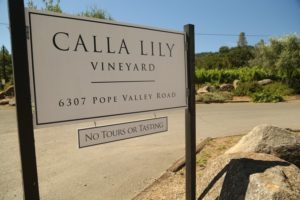
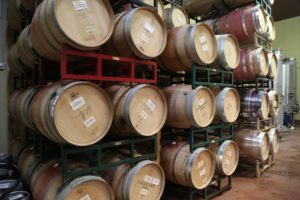 Calla Lily Estate & Winery traces its recent history back to the property’s previous owner Budge Brown. Budge built the winery on site after he purchased the existing vineyard. He produced wines to raise money to fight breast cancer and the images of a number of breast cancer survivors were used on their labels.
Calla Lily Estate & Winery traces its recent history back to the property’s previous owner Budge Brown. Budge built the winery on site after he purchased the existing vineyard. He produced wines to raise money to fight breast cancer and the images of a number of breast cancer survivors were used on their labels.
Budge started his wine brand, Cleavage Creek after his wife Arlene succumbed to breast cancer in 2005. The brand’s motto was, “s ‘Live to Love Life”. He and Arlene originally purchased the property before her diagnosis with plans to turn it into to retreat center for women. Budge purchased the existing “Cleavage Creek” label/name from another winery and released his first wine in 2007.
Breast Cancer survivors would pose for each of the wine labels and those who were selected for the label have their story published on the Cleavage Creek website. Around 200 women applied each year and went through a screening process. The winery supported several Breast Cancer organizations including “Casting for Recovery” a fly fishing group for breast cancer survivors, and the much needed Adopt-A-Patient program in which they helped fund patients who couldn’t afford treatments outside of the coverage of their insurance policies. Two of their most popular wines were the non Napa Valley Secret White and the Secret Red.
Farming was certainly not something new to Brown. He had been farming a number of crops in the Manteca area for 60 years. Along with farming he started the very popular Manteca Waterslides which operated for 31 years and were visited by not only local but international visitors in the summer time.
The original Cleavage Creek Winery and tasting room opened in November 2010. Thousands of bulbs including daffodils, iris, and tulips were planted on the property during Budge’s ownership. The tasting room is nicely decorated including the brass ceiling which was imported from Canada; this is reminiscent of an old saloon from the 1800s. Budge also owned several other properties including the former Tulip Hill Winery in Lake County, a 108 acre property on Mt. Veeder and was sourcing grapes from the Mt. Oso Vineyard managed at the time by Budge’s son Jeff in the Tracy Hills on the edge of California’s Central Valley
Tragically Budge died when he crashed his single engine plane into the mountains of the El Dorado National Forest in Amador County in 2011. No one else was in the plane at the time.
The winery sat vacant for several years before Hong Kong based friends and now business partners Anthony Fung and Andy Chui along with a third partner Dr. SW Cheung, purchased the property. Fung owns a variety of businesses in Hong Kong including the wine distribution company, CCF Wines Limited. His introduction to wine was when he was studying at Cambridge University in the UK and joined the Cambridge University Wine Society. New York born and raised Chui, co-founded what became an 800 million dollar hedge fund at age 26. Since then he has been CEO of several financial companies and is currently based in Hong Kong and is CIO of Checkmate Capital.
Through a local real estate agent, they were connected with one of the most experienced wine consultants in Napa Valley, Cary Gott. When providing Fung and Chui information about local vineyards, Cary learned of the former Budge Brown property.
The property is approximately 95 acres of which twenty acres of vines were already established at the time of their purchase. The oldest vines date back to 1995 and include a small block planted on AXR rootstock that has never been infected with phylloxera. The vineyard is at an elevation of around 800 feet with vines planted east on the hills backing up against the Howell Mountain appellation.
This is a quieter part of Napa Valley that few first-time tourists to the region ever see – a part of the county that is certainly worth seeking out. It is rural with few wineries and a nice balance of natural landscape and vineyards. It is more likely you will hear birds rather than the noises of passing vehicles in this part of Napa.
Pope Valley is named for its first western settler, William Julian Pope. Born in Kentucky in 1805, like his father John, he is one of the earliest settlers in Napa Valley. He was a trapper in New Mexico; he first came to California in 1827 and again in 1835 to Los Angeles. He spent a year in jail in San Diego after being arrested by the Spanish for entering a Mexican territory without holding the proper passport.
In 1841 he came to Napa Valley and settled in a valley east of the main Napa Valley, now known as Pope Valley. He built an adobe home on 8,873-acres gifted to him that same year by acting Mexican governor, Manuel Jimeno. Pope wasn’t the the only early settler to have a valley named after him in the region; reference Cyrus Alexander, William Knight, Frederick Franz and William Gordon.The official document regarding the request for land by Pope was in Spanish and was received at the Custom House in the Port of Monterey in the Department of the Californias. Incidentally, the Customs House is the oldest still standing government building in California having been built in 1827, some 14 years before Pope’s letter was received. This building was also the site where Commodore John D. Sloat first raised the American flag in 1846, claiming California as a U.S. territory. It is California Historical Landmark No. 1.
Monterey is home to some of California’s oldest buildings. Not far from the Customs House is the still standing Cathedral of San Carlos Borromeo built between 1791 and 1794; it is the oldest stone building in California.
In English, Pope’s request translates to the following:
“Appeal to the Governor – That he is the owner of a number of full grown cattle,, and has no place for their shelter and protection: that in his search he has found land – a drawing of which is annexed, and that he has the consent of Don Guadalupe Mariano Vallejo – Director of Colonization of the Northern Frontier, and humbly asks you to grant him this land for which you will receive mercy and gratitude”. Monterey, Sept. 30, 1841 Julian Pope. Incidentally the cost of granting the seal was 25cents. Not bad for 8,873-acres Rancho Locoallomi land grant. For reference California’s first land grant given was San Pedro in Los Angeles County in 1784 and the last one San Juan Capistrano del Camote, in San Luis Obispo County in 1846.
Pope’s wife Juliana Salazar Pope was among the earliest women pioneers in Napa Valley along with Kitty Speed Fowler Musgrave, Maria Soberanes Bale Peabody and Maria de Jesus Higuera Juarez among others. Tragically Pope died at only 38 in an accident involving an ax in which he supposedly bled to death in 1843, having spent so little time in the valley that carries his name. Juliana married again, this time to Elias Barnett one of the first western settlers in Napa Valley; her property remained under family ownership until 1856. Elias’s last grandson James Barnett died in Napa in 1997 at age 92.
The Wallace family, long associated with Pope Valley settled here in 1867 and purchased part of Pope’s original property including the site of his original adobe home. The Wallace’s eventually built an 8 room 2-story brick home on site of Pope’s old adobe structure.
One of California’s most historic resorts, Aetna Springs is located a short drive from Cala Lilly Winery. Reference our in depth notes on the history of this resort as part of our review on this website of Heibel Ranch Vineyards. And for many years in the 1940s and 1950s, Kirkpatrick Ranch in Pope Valley owned by Gordon Kirkpatrick was home of Napa County’s largest turkey farm. During the height of his operations, his ranch produced about 38,000 turkeys a year.
Pope Valley is a very tight knit community. Other early families who moved to Pope Valley who still have descendants living in the area including the Hardins, Kirkpatricks, Eakles and the Paradys among others. And while it is not yet a sub appellation within Napa Valley, it should be. This region is distinctive based on its geography from the rest of Napa Valley and from a viticulture perspective, Pope Valley is long overdue to receive additional exposure and recognition for the quality of wines it produces
—
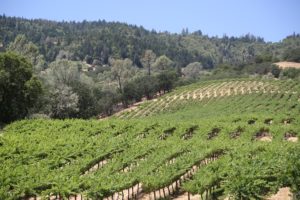
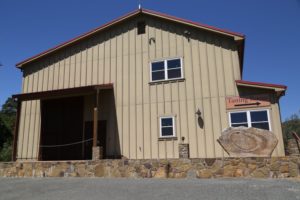 Cary’s contributions to the wine industry are significant; he is a 4th generation winemaker (his father was winemaker and president of Inglenook in the 1960s). Cary grew up on the grounds of Petri Winery, just outside of tiny Escalon in California’s Central Valley. Initially wanting to flee the wine business he chose to study architecture at USC in Los Angeles. In 1965 the nearby Watts Riots happened and combined with the tensions in the city and not so sure about his continued interest in architecture, he switched schools, moved to Davis where he enrolled at UC Davis. He remembers taking a class by prominent wine professor Maynard Amerine and being completely engrossed by what he was learning. Wine soon became a passion. His first job in Napa Valley was working at Sterling Vineyards in 1969 with founding winemaker, Ric Foreman. Interestingly, some of the first Sterling wines were stored at Schramsberg Vineyards until the caves were completed at Sterling. Sterling’s hospitality center and winery on top of the hill were not yet completed at that time.
Cary’s contributions to the wine industry are significant; he is a 4th generation winemaker (his father was winemaker and president of Inglenook in the 1960s). Cary grew up on the grounds of Petri Winery, just outside of tiny Escalon in California’s Central Valley. Initially wanting to flee the wine business he chose to study architecture at USC in Los Angeles. In 1965 the nearby Watts Riots happened and combined with the tensions in the city and not so sure about his continued interest in architecture, he switched schools, moved to Davis where he enrolled at UC Davis. He remembers taking a class by prominent wine professor Maynard Amerine and being completely engrossed by what he was learning. Wine soon became a passion. His first job in Napa Valley was working at Sterling Vineyards in 1969 with founding winemaker, Ric Foreman. Interestingly, some of the first Sterling wines were stored at Schramsberg Vineyards until the caves were completed at Sterling. Sterling’s hospitality center and winery on top of the hill were not yet completed at that time.
Cary founded Monteviña Wines in Amador County in 1971 (in the basement of his house) focusing on Zinfandel and was their winemaker and president until 1982. Incidentally of historical interest, winemaker Scott Harvey was his first hire (see our photos of this winery at the end of this review). Not one to sit still, Cary was winemaker and President of Corbett Canyon Vineyards in San Luis Obispo from 1983 to 1986. At the time they were a startup winery and over the years morphed into a very successful brand – their success came quickly; Cary recalls over 100,000 cases were being produced in their early years. Later he worked for Seagram Classics Wine Company overseeing production for both The Monterey Vineyard and later Sterling and Mumm Vineyards.
And Cary’s last name is probably very familiar to those who live in Napa Valley; he partnered with his sons Joel and Duncan to lease what was Taylor’s Refresher in 1999 – now Gott’s Roadside Cafe in St. Helena. As of 2024 they now operate 7 Gott’s from Napa to parts of the San Francisco Bay Area.
Cary founded Vineyard and Winery Estates in 1997 offering his consulting services for both brands and wineries. Today Cary oversees the wine making at Calla Lily. His philosophy of wine making is that one is not going to get more out of grapes then what they give you” referring to the importance of using grapes from premium vineyards. When he was brought on to manage the Pope Valley estate, he immediately set about improving the quality of the vines – taking it “up several notches” as he recalls.
Both Fung and Chui chose the image of a Calla Lily for their brand; this flower represents elegance, beauty and in China, is the typical flower you give someone when in love. Cary has worked with long time graphic artist Lin Weber; the image she created mirrors the elegance of the real flower. The first vintage of Calla Lily was in 2011 from purchased grapes; by 2014 their production was entirely from their Pope Valley estate.
Select Wines
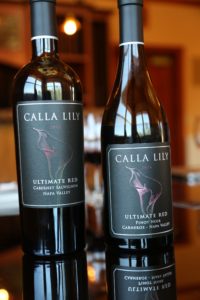 The 2014 Calla Lily Ultimate Red Pinot Noir was sourced from the Truchard Vineyard in Napa’s Carneros district. Dynamic in its aromatic presentation it shows bright red fruit, an earthiness, hints of mushroom, white pepper and spicy plum. Mostly red fruit shows on the palate including flavors of raspberry and strawberry, complemented by with baking spices. Excellent acidity with a lively finish featuring earthy somewhat dusty tannins. Soft, yet noticeable these persist for some time.
The 2014 Calla Lily Ultimate Red Pinot Noir was sourced from the Truchard Vineyard in Napa’s Carneros district. Dynamic in its aromatic presentation it shows bright red fruit, an earthiness, hints of mushroom, white pepper and spicy plum. Mostly red fruit shows on the palate including flavors of raspberry and strawberry, complemented by with baking spices. Excellent acidity with a lively finish featuring earthy somewhat dusty tannins. Soft, yet noticeable these persist for some time.
The 2013 Calla Lily Ultimate Red Cabernet Sauvignon showcases the aromatic power that this vintage often brings. Complex and with depth it reveals herbal notes, a hint of cigar smoke, red licorice, red cherry and currants. Very bright aromatics. Darker in fruit flavor on the palate then what shows on the bouquet, it offers flavors of black licorice, blackberry, plum and hints of cedar. The texture of the tannins feel good – they are slightly chewy and long lasting on a persistent finish.
And their flagship wine, the Audux means bold or courageous in Latin and is a tribute Cabernet Sauvignon to all the wine pioneers who have left their mark in the Napa Valley starting with George Yount who planted the valley’s first wine grapes in the 1830s. The 2012 Calla Lily Audax reveals bright fruit including blackberry and boysenberry with a whisper of brown chocolate. The aromatics are very pretty. This wine reveals a surprising softness on the entry; the palate is mouthwatering and juicy with excellent integration of fruit and structure. It shows flavors of blackberry, black pepper and tobacco leaf with tannins that run the length of the palate and persist for quite some time.
—
The winery is permitted for 16,000 gallons a year. Total annual production is around 3,000 cases with the majority of the wine distributed to China and select other Asian markets. As of 2024 and for some time, this winery has been for sale. We will update our notes once we have more information and or the property sells.
The wines are selectively distributed and sold in Hong Kong. For more information or to inquire about distribution, visit: www.callalilywines.com
Calla Lilly Estate
Montevina (now Terra d’Oro Winery), Amador County As of 2024, for sale by the Trinchero Family






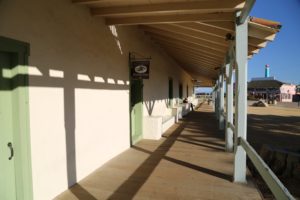
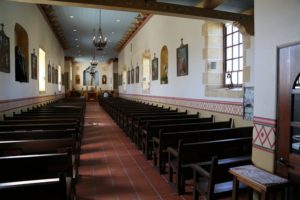
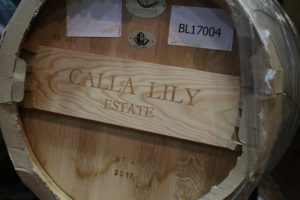
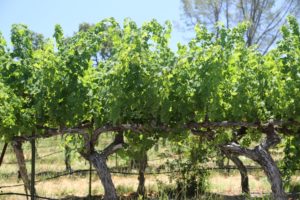
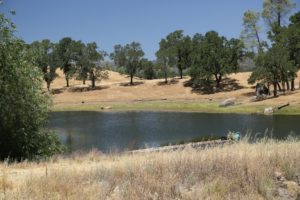
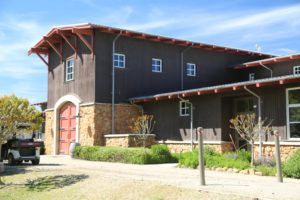
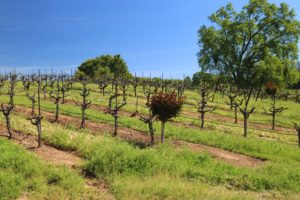
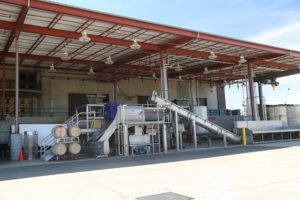
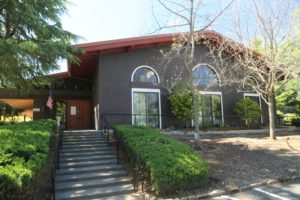
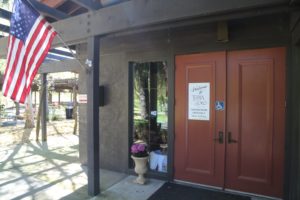
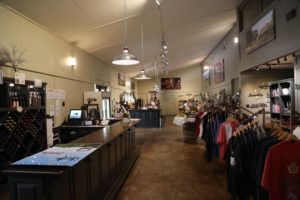
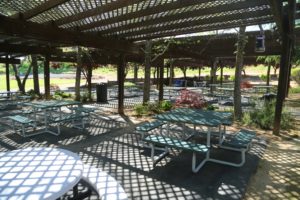
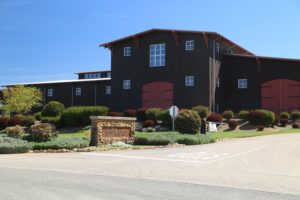
Absolutely love the Ultimate Red cab. Perfect finish. Excellent bouquet. The 2012 drinks well now.
Michael – glad to hear you enjoyed their Ultimate bottling. I’m curious to see what will happen to the property if its sold (as its been on the market for some time now).
~ Dave
Sometimes I am asked to recommend wineries or brand owned by those with Asian heritage in Napa Valley. See comments under our profile of Revana Winery for Indian (India) heritage owned Napa Valley wineries. I’m jotting these down here so I can reference this list in the future. And also reference the Asian Wine Association of America (AWAA) for more information.
4088 Winery (China)
70s Love (China) possibly no longer producing
Appellation Cellars (China)
Calla Lily (China)
Dalla Valle (Japan)
Dana (Korea)
Diamond Mountain Vineyard (China)
Đồi Đá (Vietnam)
Empress Napa (China/Hong Kong)
Fairest Creature (China)
Hestan (Hong Kong)
iNapa Wine (Myanmar) still producing?
Innovatus (Korea)
J.D. Estate
Kale Wines (Philippines)
Kanpai (Japan)
Kazumi (Japan)
Keever
Kenzo Estate (Japan)
Lanthanide (China)
Markham (Japan)
Materra (Japan)
Maxville Winery (China)
Moone Tsai (China)
Napa de Oro (Philippines)
Plinth (China)
Quixote (China)
RD Winery (Vietnam)
Ru Vango (Vietnam)
Seven Stones (Korea)
Shafer (Korea)
Silenus (China)
Sloan (China)
Vin Roc
Yao Ming (China) No longer producing?
Yan Cellars (Philippines)
And we heard the folks at Baan Oak Knoll and Osha Thai might be producing wines at some point from their Oak Knoll property. That would be very cool as they will be the first Thai/Napa Valley owned winery brand 🙂